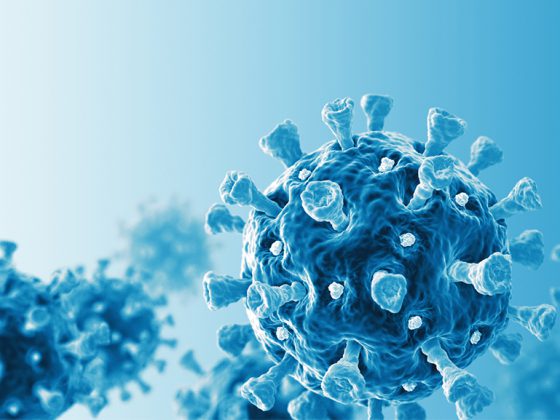Early detection and follow-up are critical for the management of type 2 diabetes mellitus. This is more relevant than ever in the current COVID 19 pandemic. The goals of modern diabetes therapy go beyond glycemic control to include renal and cardiovascular outcomes. In particular, SGLT-2 inhibitors and GLP-1 receptor agonists have opened up entirely new therapeutic options. However, the potential is currently not being optimally exploited.
In the context of this year’s virtual edition of the congress Diabetologie grenzenlos, Prof. Dr. med. Petra-Maria Schumm-Draeger, Medical Director and Specialist for Internal Medicine, Endocrinology and Diabetology at the Center for Internal Medicine Fünf Höfe, Munich (D) gave an up-to-date overview of important developments in the field of type 2 diabetes [1]. In summary, a highly innovative spectrum of therapies is currently available for the treatment of patients with type 2 diabetes, with cardiovascular and renal prevention and safety being realistic treatment goals beyond glycemic control.
SGLT-2-i and GLP-1-RA: innovative therapeutic option with great potential
During the corona pandemic, optimal metabolic control is particularly relevant (box) . But as Prof. Schumm-Draeger emphasizes: “Not only because of the pandemic, but also in general, it is of great importance to diagnose and treat at an early stage”. In patients with type 2 diabetes, the best possible metabolic control is required, also to counteract diabetic sequelae and an associated reduced life expectancy [4,5]. Cardiovascular disorders and chronic kidney disease are among the most common diseases that can manifest in type 2 diabetics over the years. With the SGLT-2 inhibitors (SGLT-2-i) and the GLP-1 receptor agonists (GLP-1-RA), innovative new treatment options with great therapeutic potential are available. Diabetics who already suffer from heart failure or chronic kidney disease can also benefit from the expansion of therapeutic options [1].
Implement guideline recommendations in clinical practice
Current data suggest that the use of SGLT-2-i may prevent many new cases of hospitalization due to heart failure as well as progression of chronic kidney disease, which also applies to people with diabetes mellitus with preexisting cardiovascular disease [5]. Therapy with GLP-1-RA leads to a significant reduction in myocardial infarction, stroke, and peripheral arterial disease in people with diabetes mellitus without as well as with pre-existing cardiovascular disease [6].
| COVID-19 pandemic: metabolic control is particularly important
As is now known, in diabetic patients, not only prevention of SARS-CoV-2 infection but also disease progression of COVID-19 infection is directly associated with glycemic control [1]. Large population studies show that mortality rates are at least 10% higher in type 2 diabetics with inadequate metabolic control [2]. According to current recommendations of the German Diabetes Society, the prevention of SARS-CoV-2 infection, as well as optimal management of metabolic control both before and in case of COVID-19 infection, is absolutely paramount in cases of known diabetes mellitus [3]. Screening for initial manifestation of diabetes in patients infected with SARS-CoV-2 should also not be neglected [3]. |
The question of treatment reality with respect to secondary and primary prevention seems of greatest importance in light of the new trial data. In classical secondary prevention, only about 12% of patients currently receive an SGLT-2 inhibitor and just under 13% a GPL-1 receptor agonist [1]. In view of the scientific data situation, an improvement is required in this regard in the future, the speaker said. Cardiovascular outcome studies of SGLT-2-i and GLP-1-RA show solid data regarding benefits for cardiovascular and renal endpoints in people with type 2 diabetes mellitus [1,7]. And also according to consensus recommendations and guidelines of the American and European Diabetes Association (ADA/EASD) as well as the German Diabetes Society (DDG), the early optimal therapy of type 2 diabetes should be oriented towards cardiovascular and renal risk factors [8,9].
Specifically, this means that after lifestyle intervention training and metformin therapy, SGLT-2-i and GLP-1-RA, respectively, should be prioritized accordingly. If treatment intensification up to insulin therapy is necessary, those medications should be selected that guarantee the lowest hypoglycemia risk and the greatest possible cardiovascular safety for the patient.
Congress: Diabetology without borders 2021
Literature:
- Schumm-Draeger P-M: Type 2 diabetes: what’s important and new – update 2021. Prof. Dr. med. Petra-Maria Schumm-Draeger, press conference, Diabetologie grenzenlos, 26.02.2021.
- Zhu, et al: Cell Metabolism 2020; 31: 1068-1077.
- Bornstein SR, et al: Practical recommendations for the management of diabetes in patients with COVID-19. Lancet Diabetes Endocrinol 2020;8(6): 546-550.
- Birkeland KI, et al: Diabetes Obes Metab 2020; 22(9): 1607-1618.
- Kosiborod MN, et al: American Diabetes Association 80th Scientific Sessions – Virtual, June 12-16, 2020.
- Dave CV, et al: Diabetes Care 2020; 43: 921-924.
- Cannon CP, et al: American Diabetes Association 80th Scientific Sessions – Virtual, June 12-16, 2020.
- Standards of medical care, Diab Care 2021, Vol. 44, 1, 2021
- Practice recommendations of the German Diabetes Society: Therapy of type 2 diabetes. Updated version, October 2020, Diabetology and Metabolism 15 (Suppl. 1).
HAUSARZT PRAXIS 2021; 16(4): 35 (published 6.4.21, ahead of print).











